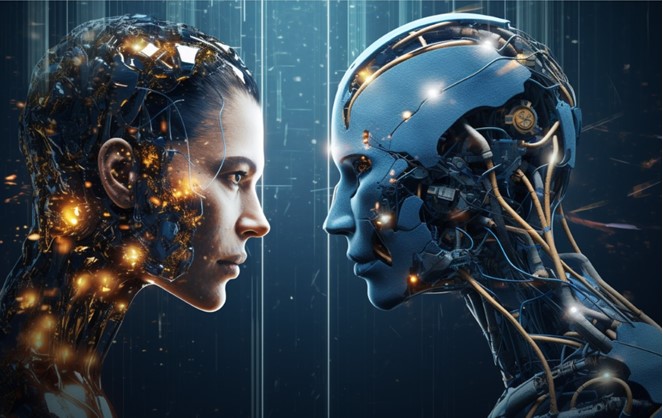
Understanding the Distinction between Algorithm-Driven Functionality and Artificial Intelligence
Technological advancement doesn’t sleep. Rapidly evolving and unfolding, it is hard to keep up with the difference between, machine learning, artificial intelligence, and generative AI. Natural language processing and speech recognition also have massive overlaps, but are definitively different. Two “whiz-bang” technologies that are often confused, or at least the words have been used interchangeably are “artificial intelligence” and “algorithm-driven functionality.” While both concepts contribute to the advancement of technology, one would fall behind if they don’t understand the distinctions. Below we aim to clarify the dissimilarities between algorithm-driven functionality and artificial intelligence functionality, shedding light on their unique characteristics and applications will help investors understand the nature of companies they may be evaluating.
Algorithm-Driven Functionality
Algorithm-driven functionality primarily relies on predefined rules and step-by-step instructions to accomplish specific tasks. An algorithm is a sequence of logical instructions designed to solve a particular problem or achieve a specific outcome. Algorithms have been utilized for centuries, even before the advent of computers, to solve mathematical problems and perform calculations.
In state of the art technology, algorithms continue to play a crucial role. They are employed in search engines to rank web pages, in recommendation systems to suggest personalized content, in market analysis to indicate potential trades, and in sorting to organize data efficiently. Algorithm-driven functionality typically operates within predefined parameters, making it predictable and deterministic.
While algorithms are powerful tools, they lack the ability to learn or adapt to new situations. They require explicit instructions to perform tasks and cannot make decisions based on contextual understanding or real-time data analysis. Therefore, algorithm-driven systems may not best fit a complex situation with dynamic scenarios that demand flexibility and adaptability.
Artificial Intelligence Functionality
Artificial intelligence encompasses a broader set of technologies that enable machines to simulate human intelligence. AI systems possess the ability to perceive, reason, learn, and make decisions autonomously. Unlike algorithm-driven functionality, AI algorithms are capable of adapting and improving their performance through continuous learning from data.
Eventually they can have a mind of their own.
Machine learning (ML) is a prominent subset of AI that empowers algorithms to automatically learn patterns and insights from vast amounts of data. By analyzing historical information, ML algorithms can identify trends, make predictions, and generate valuable insights. Deep learning, a specialized branch of ML, employs artificial neural networks to process large datasets and extract intricate patterns, allowing AI systems to perform complex tasks such as image recognition and natural language processing.
AI functionality can be found in various applications across different sectors. Chatbots like ChatGPT can understand and respond to human queries, autonomous vehicles navigate and react to their surroundings, and recommendation systems that provide personalized suggestions are all examples of AI-driven technologies. These systems are capable of adapting to changing circumstances, improving their performance over time, and addressing complex, real-world challenges.
Differentiating Factors
The key distinction between algorithm-driven functionality and AI functionality lies in their capability to adapt and learn. While algorithms are rule-based and operate within predefined boundaries, AI algorithms possess the ability to learn from data, identify patterns, and modify their behavior accordingly. AI algorithms can recognize context, make informed decisions, and navigate uncharted territory with limited explicit instructions.
What freightens many is AI functionality exhibits a higher degree of autonomy compared to algorithm-driven systems. AI algorithms can analyze and interpret complex data, extract meaningful insights, and make decisions in real-time without relying on explicit instructions or human intervention. This autonomy enables AI systems to operate in dynamic environments where rules may not be explicitly defined, making them suitable for tasks that require adaptability and learning.
Take Away
Algorithm-driven functionality and artificial intelligence functionality are distinct concepts within the realm of technology. While algorithm-driven systems rely on predefined rules and instructions, AI functionality encompasses a broader set of technologies that enable machines to simulate human intelligence, adapt to new situations, and learn from data. Understanding these differences is crucial for leveraging the strengths of each approach for a given solution and harnessing the full potential of technology to solve complex problems and drive innovation to provide solutions and benefit.
Managing Editor, Channelchek
Source